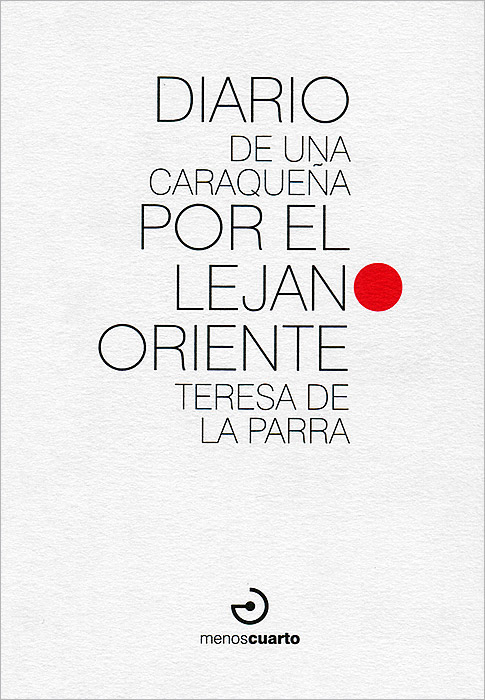Книга: Teresa de la Parra «Diario de una caraqtiena pot el Lejano Oriente»

|
Deje el equipaje, acomodese en su camarote о busque la brisa de cubierta у disfrute de una travesia literaria: tras cruzar Estados Unidos, surcara el Pacifico у recalara en Hawai, Japon у China. Este libro es un pasaporte para usted у la "Ыапса pasajera fugaz", como definio Juan Ramon Jimenez a la venezolana Teresa de la Parra, queen 1920, antes de lograr fama con sus novelas, publico un delicioso relato de viajes que ademas retrata una epoca: "Diario de una caraqtiena pot el Lejano Oriente" . Издательство: "Menoscuarto" (2011) Формат: 120x170, 88 стр.
ISBN: 978-84-96675-64-3 Купить за 490 руб на Озоне |
Teresa de la Parra
Infobox Writer
name = Teresa de la Parra
caption =
birthdate =
birthplace =
deathdate =
deathplace =
occupation = novelist
nationality = Venezuelan
period = 1920-1936
notableworks =Ifigenia, Memorias de Mamá Blanca
Teresa de la Parra (
As a member of a wealthy family, Ana Teresa spent part of her childhood at her father's hacienda, "Tazón". After the death of her father, Ana Teresa and her sisters were taken by their mother to study at the
Ana Teresa returned to
De la Parra's novel "", published in 1924, marked a change in
The protagonist of "Iphigenia", María Eugenia Alonso, a well-educated and intelligent young woman, is partly a self-portrait of the author. María Eugenia struggles against being confined in a marriage that threatens to stifle her intellectual development. She strives to determine whether it is possible for an intelligent and educated woman to evade marriage without losing her respectability in a society where women are expected to become wives and mothers.
The tone, thematic nature and social-historic context of "Iphigenia" made it controversial among some social and literary circles in Venezuela and
Winner of the annual award given by Casa Editora Franco-Ibero-Americana in Paris in 1924, Teresa de la Parra finally had her work published and received a prize of 10,000 French francs. "Iphigenia" became a categorical success among Parisian intellectuals and readers. It was soon translated into French. Two years after multiple trips and works — which included lectures in
"
After she settled in Paris, de la Parra travelled and had an intense social life. She began to research a biography of
Teresa de la Parra wandered in several
Teresa de la Parra died in
External links
* [http://www.findagrave.com/cgi-bin/fg.cgi?page=gr&GRid=10939032&pt= Teresa de la Parra's Gravesite]
Источник: Teresa de la Parra
Другие книги схожей тематики:
| Автор | Книга | Описание | Год | Цена | Тип книги |
|---|---|---|---|---|---|
| Teresa de la Parra | Diario de una caraqtiena pot el Lejano Oriente | Deje el equipaje, acomodese en su camarote о busque la brisa de cubierta у disfrute de una travesia literaria: tras cruzar Estados Unidos, surcara el Pacifico у recalara en Hawai, Japon у China… — Menoscuarto, (формат: 120x170, 88 стр.) Подробнее... | 2011 | 490 | бумажная книга |
См. также в других словарях:
Teresa de la Parra — Ana Teresa Parra Sanojo (Paris, 5 octobre 1889 Madrid, 23 avril 1936) est une femme de lettres vénézuélienne, plus connue sous le nom de Teresa de la Parra, et l un des auteurs les plus estimés de son temps. Bien qu elle passa la majeure partie… … Wikipédia en Français
Teresa de la Parra — Teresa de la Parra … Wikipedia Español
Teresa de la Parra — Infobox Writer name = Teresa de la Parra caption = birthdate = October 5, 1889 birthplace = Paris deathdate = April 23, 1936, aged age|1889|10|5|1936|4|23 deathplace = Madrid occupation = novelist nationality = Venezuelan period = 1920 1936… … Wikipedia
Teresa de la Parra — Ana Teresa Parra Santoja, más conocida como Teresa de la Parra (París, 5 de octubre de 1889 Madrid, 23 de abril de 1936) es una escritora venezolana. Hija de padres venezolanos, vivió su vida a caballo entre Europa y Venezuela. Murió en Madrid a… … Enciclopedia Universal
Parra (desambiguación) — Saltar a navegación, búsqueda El término Parra, hace referencia a varios artículos en la wikipedia Parra, con plural parras: Vid. Contenido 1 Apellido 1.1 Personajes con el apellido Parra 1.2 … Wikipedia Español
Teresa (nombre) — Para otros usos de este término, véase Teresa. Teresa Santa Teresa de Jesús Origen Griego … Wikipedia Español
